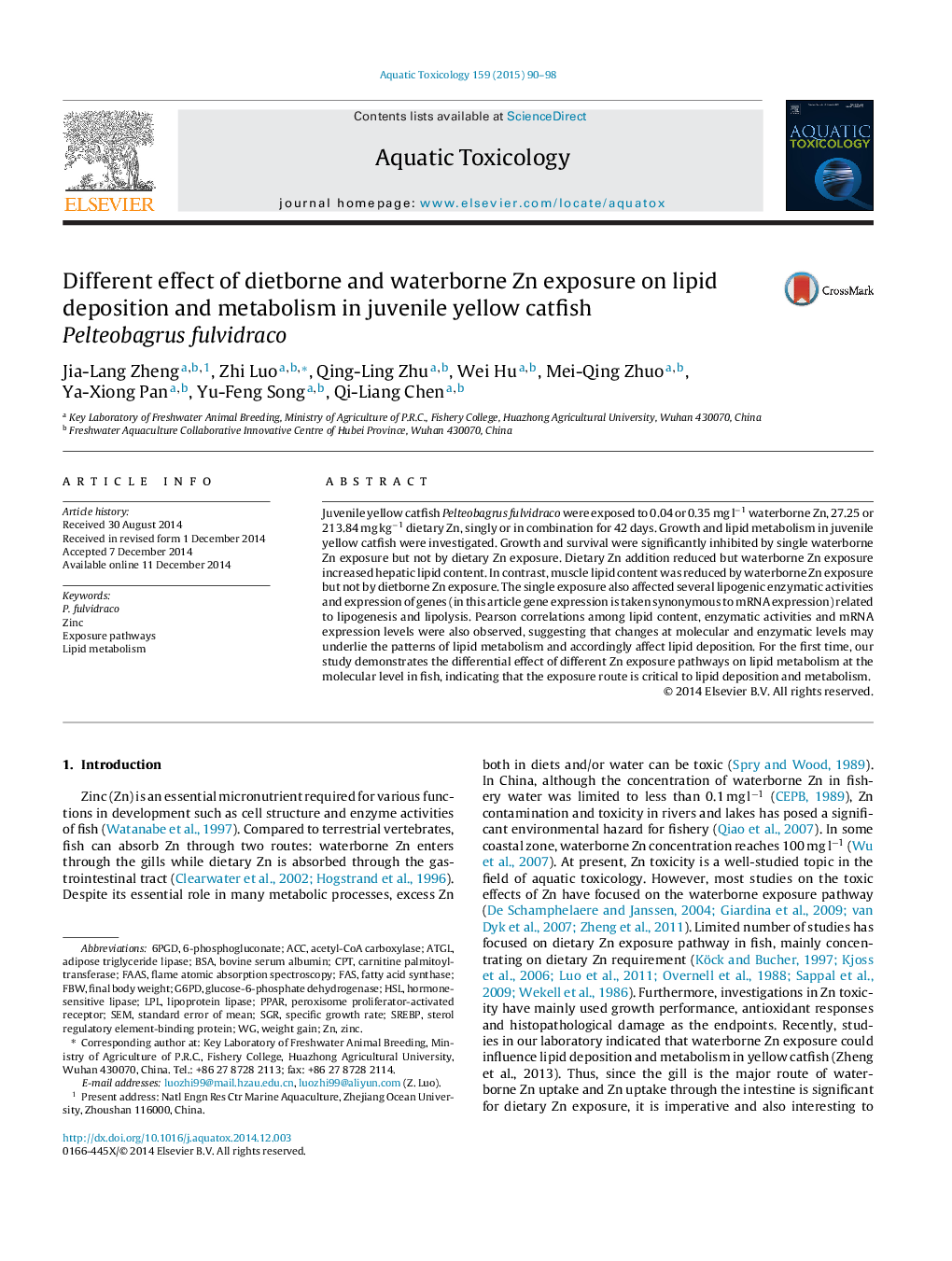| Article ID | Journal | Published Year | Pages | File Type |
|---|---|---|---|---|
| 6382284 | Aquatic Toxicology | 2015 | 9 Pages |
Abstract
Juvenile yellow catfish Pelteobagrus fulvidraco were exposed to 0.04 or 0.35 mg lâ1 waterborne Zn, 27.25 or 213.84 mg kgâ1 dietary Zn, singly or in combination for 42 days. Growth and lipid metabolism in juvenile yellow catfish were investigated. Growth and survival were significantly inhibited by single waterborne Zn exposure but not by dietary Zn exposure. Dietary Zn addition reduced but waterborne Zn exposure increased hepatic lipid content. In contrast, muscle lipid content was reduced by waterborne Zn exposure but not by dietborne Zn exposure. The single exposure also affected several lipogenic enzymatic activities and expression of genes (in this article gene expression is taken synonymous to mRNA expression) related to lipogenesis and lipolysis. Pearson correlations among lipid content, enzymatic activities and mRNA expression levels were also observed, suggesting that changes at molecular and enzymatic levels may underlie the patterns of lipid metabolism and accordingly affect lipid deposition. For the first time, our study demonstrates the differential effect of different Zn exposure pathways on lipid metabolism at the molecular level in fish, indicating that the exposure route is critical to lipid deposition and metabolism.
Keywords
ACC6PGDFBWHSLSREBPCPTG6PDFASLPLFAASPPARSGR6-phosphogluconateBSAbovine serum albuminAtglacetyl-CoA carboxylasefatty acid synthaseWeight gainstandard error of meanflame atomic absorption spectroscopyZincadipose triglyceride lipasehormone-sensitive lipaseLipoprotein lipaseLipid metabolismSEMExposure pathwaysspecific growth ratefinal body weightSterol regulatory element-binding proteinCarnitine palmitoyltransferaseglucose-6-phosphate dehydrogenaseperoxisome proliferator-activated receptor
Related Topics
Life Sciences
Agricultural and Biological Sciences
Aquatic Science
Authors
Jia-Lang Zheng, Zhi Luo, Qing-Ling Zhu, Wei Hu, Mei-Qing Zhuo, Ya-Xiong Pan, Yu-Feng Song, Qi-Liang Chen,
